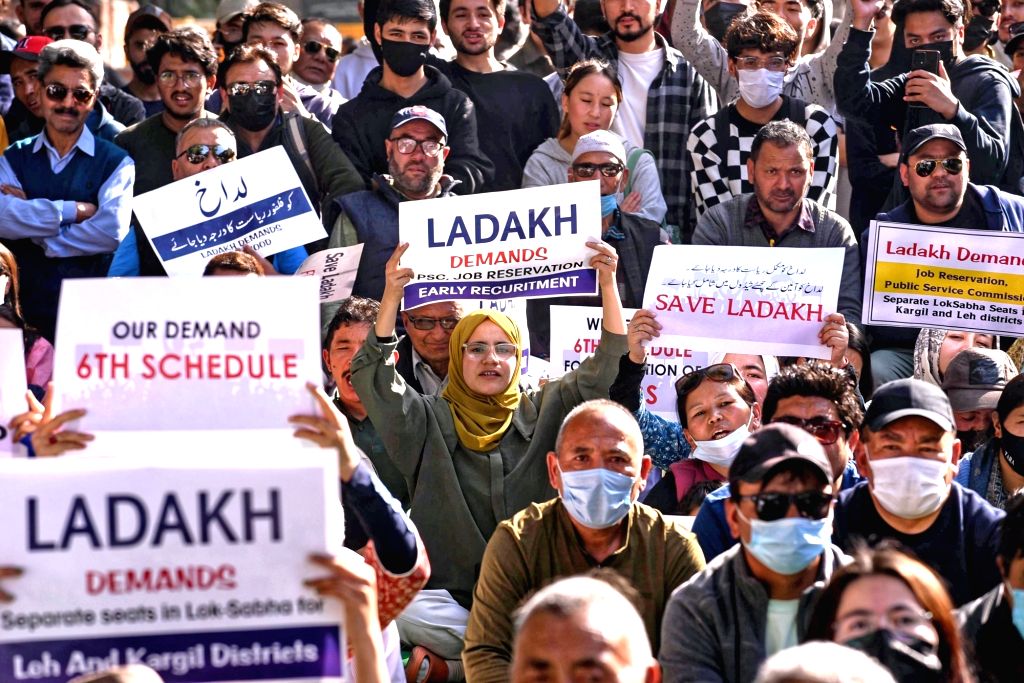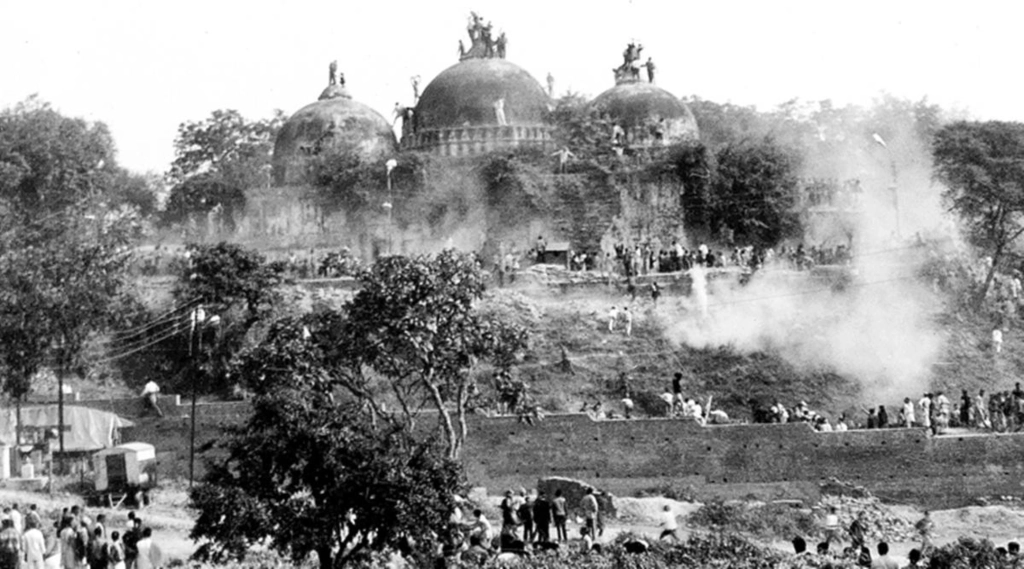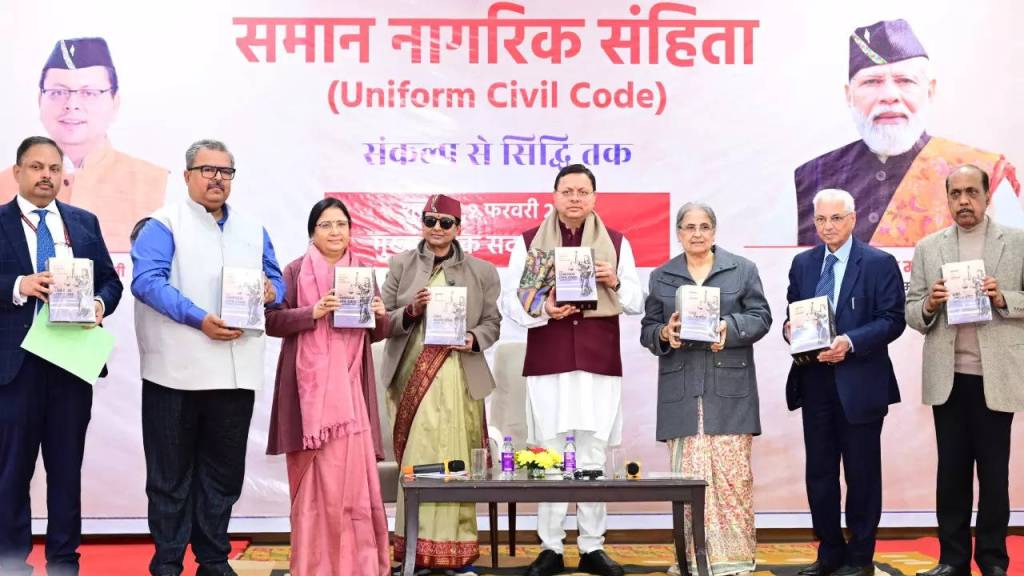During the lifetime of great revolutionaries, the oppressing classes constantly hounded them, received their theories with the most savage malice, the most furious hatred and the most unscrupulous campaigns of lies and slander. After their death, attempts are made to convert them into harmless icons, to canonize them, so to say, and to hallow their names to a certain extent for the “consolation” of the oppressed classes and with the object of duping the latter, while at the same time robbing the revolutionary theory of its substance, blunting its revolutionary edge and vulgarizing it.
-Vladimir Lenin, The State and Revolution.1
Hindutva is on an all-out offensive to rewrite history in a manner that is, ironically, ahistorical. Delhi is currently visibly peppered with posters and visuals of golden images of Lachit Borphukan, an Assamese general, commemorating his 400th birth anniversary. BJP officials in Assam have claimed that this celebration is to reclaim his position back in history but said attempt actually paints Borphukan out to be a champion of Hindutva, fighting against Muslim invaders in the form of the Mughals. The story is that of a caricature, of needlessly abhorrent villains facing against a defender of virtues and good old Hindu values in the form of Borphukan. Such re-creation of history is deeply problematic as it hollows out the realities of the situation and contributes to fascism’s larger aim of creating a national identity from among certain classes. This process does not work in isolation, but requires the existence of an ‘other’ to grow the supposed national identity. The failure of this project lies in the fact that India comprises of a multi-national character, which provides a sharp contradiction to Hindutva’s attempt of manufacturing a common Hindu nationality. To understand this attempt at manufacturing the truth, we look at both a purported villain, in Tipu Sultan of the Mysore kingdom, and the co-opted hero, in Lachit Borphukan, to understand the larger insidious character of brahmanical Hindutva fascist propaganda.
Masking An Anti-Imperialist as an Islamic Villain

Tipu Sultan has become a victim of the the Sangh Parivar’s programme to rewrite history. The BJP government in Karnataka has removed chapters on Tipu Sultan2 and have also banned state-funded celebrations of Hazrat Tipu Sultan Jayanti, the celebration of his birth anniversary.3 The narrative has changed to presenting Tipu Sultan as an Islamic-fascist ruler who was an enemy of the Hindus. While the such sentiments had only emerged recently in Karnataka since the people who were part of the erstwhile Mysore kingdom had always viewed him as a reformer, this historically incorrect narrative has existed in Kerala for a longer span of time.
The Ambedkaraite intellectual Sunny Kappikadu has spoken about Tipu Sultan, explaining that mainstream Kerala historians have always portrayed Tipu as a barbaric ‘anti-Hindu’ ruler, engaging in a brahmanical retelling of the caste reforms happening in Mysore kingdom during Tipu’s time.4 The mainstream Kerala historians, including Marxist historians, have focused mostly on a version of history that is tinged with notes of brahminism, with the history of brahmins being viewed as the history of Kerala. This narrative was used by the Sangh Parivar forces as part of their cultural propaganda in Kerala. The temples in Kerala were spaces dominated by brahmins and excluding people from oppressed caste an entry into this space. The exclusion of the vast majority of the population had led to the degradation of the temples in a period when the material conditions were changing. The Sangh Parivar forces later on spread the myth that such temples had degraded due to Tipu pillaging the temples. In reality, the British and their local collaborators, the Marathas, ransacked temples themselves, such as that of Sringeri Math, which was actually restored by the kingdom of Mysore itself.5
This depiction of Tipu as an anti-Hindu villain is also an obfuscation of the larger material changes taking place within Mysore. Within the state of Mysore, with Tipu as king, there was an observable change by way of the erosion of the dominance of the local landlord community of the Palegars. The project started under Raja Chikkadevaraja Wodeyar’s time, continuing under Haider Ali and Tipu Sultan in whose times Mysore emerged as a centralized state. Through this, Mysore started an attack on caste by way of land reforms. Land accumulated through the feudal concept of land awards for the maintenance of the priest or custodian tending to temples or dargahs would be re-evaluated, with surplus land being redistributed. Through the army, the state would open entrance of soldiers from various castes traditionally not allowed to hold land like the Baydaru, Holeyas and Madigs who were granted land for their services in the army.6 Culturally, this reform also resonated within the superstructure, with regressive practices such as that of forcing lower caste women to walk around without their breasts covered being attacked. Other caste based practices, such as the roads of Malabar being accessible only to the upper castes, were tackled in Mysore with the construction of Firangi roads open to people of all castes.
Feudalism saw various defeats within Mysore with the banijaga trader class forming a strong nexus with the state wherein commodity production intensified and factories started to emerge as the transformation of independent mercantile into independent industrial capital became apparent. The Mysore of this time was therefore a paradigm for emergent anti-imperialist indigenous capitalism from within India, progressive in nature in its resistance towards imperialism and feudalism. Given that this is also the nature of progressive democratic politics within India, the demonization of Tipu Sultan as an Islamic fascist, along with the erasure of the changes in relations of production occurring in Mysore reflect the larger insidious nature of the brahmanical Hindutva fascist project and its collaboration with imperialism.
Co-opting an Idol of a National Liberation Movement

Lachit Borphukan was a general of the Ahom armies who fought against the Mughal empire’s expansion into the Ahom kingdom, defeating Aurangzeb’s armies at the Battle of Saraighat in 1671. While Hindutva fascist propaganda labels this as the victory of a Hindu leader against the invading ‘others’ in the Islamic Mughal forces, the realities of history present a different picture. Borphukan was a practitioner of the local Tai religion. The antagonists of his story were not an Islamic army but an army led by Raja Ram Singh Kachwaha comprised of a vast number of Hindus.7 In the desperate need to manufacture a Hindu national identity, Borphukan’s true nature, as that of an Ahom general protecting the sovereignity of its people is lost. This is part of a larger project to co-opt an idol of the national liberation movement within Assam.
Assam’s composition of peoples has consistently been under attack, especially after it was made a land ripe for setting up tea plantations and extracting crude oil and other resources for British colonialists. The Indian big bourgeoisie would develop in the womb of imperialism and feudalism and would make space for itself in domination of the bureaucracy and trade of the region, serving as employees and traders subservient to the British ruling class. Since this class would also be comprised of the Bengali and Marwari peoples, struggle on national lines would only intensify in Assam, as the indigenous populations would find themselves short on opportunities, resources and surrounded in more and more disparate material conditions. This was further sharpened with the influx of displaced migrants from what is now Bangladesh, a large portion of them being Muslims during the Bangladesh liberation wars.8 Borphukan plays a relevant role here as he serves as memory of a time when the Assamese peoples fought for their sovereignty and won against all odds. In a time when Assam’s resources continue to be subject to imperialism through the Indian state and its representatives who hold power in the state legislative and executive, the memory of an Assamese nationalist leader like Borphukan serve as a dangerous reminder of history.
Borphukan being co-opted as a Hindu icon is not just a feature of Hindutva fascism’s propaganda for manufacturing a larger Hindu national identity, it is also an attempt to hollow out the memory of successful resistance against expansionism. This feature is shown in the fact that Borphukan has always been heralded by agents of the Indian government within Assam and the process of co-opting him has been going on for a long time. The Congress has built statues to his name, others have declared his birthday as a holiday.9 But where Hindutva fascism is more aggressive in its Brahmanical ideological line, in contrast with the Congress, is that it has actively played into the regional politics of Assam by weaponizing the Citizenship Amendment Act and creating a dichotomy between ‘illegal’ Muslim immigrants in Assam and the indigenous Assamese population. In this process, they attempt to polarize the Assamese cause away from self-determination and train its sight against this ‘other.’ In this way, the cause of their oppression is made out to be the Muslim migrant population instead of imperialism, feudalism and Indian occupation. To the BJP, the Congress party was equitable with the Mughal ‘outsiders’, while the Assamese people were to champion the cause of the BJP itself, to defend themselves the way Borphukan supposedly did in the Battle of Saraighat.
A Fundamental Feature of Fascism

Fascism is characterized as the “open terrorist dictatorship of the most reactionary, most chauvinistic and most imperialist elements of finance capital.” In its pursuit of expanding the domain of foreign finance capital, it utilizes all forms of reactionary elements to maintain its control. Fascist propaganda relies on the need to create an ‘other’, either an external or internal one and perpetuates this not just in its retelling of history but by normalizing terrorist violence against said ‘others’. It plays onto the national chauvinistic elements in Assam and polarizes them onto the side of the Hindu nationalist agenda, which is reflected in their treatment of Borphukan and Tipu.
Such caricatures of history are drawn to stifle resistance, to divert it’s sight away from imperialism, feudalism and their expansionism, but focus on a manufactured foe. In the case of both Tipu and Borphukan, persons themselves are merely symptoms of the larger political economy that surrounds them. Their re-drafted stories are attempts not just to alter their positions in history, but to alter the realities of the historical processes happening in and around their times. Such attempts to create an ahistorical history are part of grandiose projects that aim to bring to reality things which are not real, that aim to create narratives that serve the insidious alliance of imperialism and feudalism that continues to hold the various peoples of India back.
by Mukundan, student of law at OP Jindal Global University
Download PDF of this article here
References:
- Lenin, V. (1917) The State and Revolution, Marxists.org. Moscow. Available at: https://www.marxists.org/archive/lenin/works/1917/staterev/
- Press Trust of India (2020) “Chapter On Tipu Sultan Dropped From Class 7 Textbook In Karnataka: Report,” NDTV, 28 July. Available at: https://www.ndtv.com/karnataka-news/chapter-on-tipu-sultan-dropped-from-class-7-textbook-in-karnataka-report-2270343.
- TNN (2019) “HC to Karnataka Govt: Rethink ban on Tipu Jayanti,” Times of India, 7 November. Available at: https://timesofindia.indiatimes.com/city/bengaluru/hc-to-karnataka-govt-rethink-ban-on-tipu-jayanti/articleshow/71949263.cms
- Bangalore Literature Festival, Tipu Sultan and the Re-fashioning of History , Youtube. Available at: https://youtu.be/fsCVYhehdQk
- Daniyal, S. (2016) “That awkward moment Tipu Sultan restored a Hindu temple that the Marathas sacked,” Scroll.in, 10 November. Available at: https://scroll.in/article/821075/that-awkward-moment-when-the-marathas-sacked-a-hindu-temple-and-tipu-sultan-restored-it
- Olikara, N.G. (2022) “Under a benevolent Sarkar: The Mysorean Farmer during the rule of Tipu Sultan (1782 – 1799),” The Seringapatam Times. Toshkhana. Available at: https://toshkhana.wordpress.com/2022/01/08/under-a-benevolent-sarkar-the-mysorean-farmer-during-the-rule-of-tipu-sultan-1782-1799/
- Agarwala, T. (2021) “Borphukan & BJP: 17th-century Ahom General as a ‘Hindu’, ‘swadeshi’ warrior,” The Indian Express, 24 March. Available at: https://indianexpress.com/article/explained/borphukan-bjp-13th-century-ahom-general-as-a-hindu-swadeshi-warrior-7242058/
- Shamshad, R. (2018) “The Foreigners of Assam,” Oxford Scholarship Online [Preprint]. Available at: https://doi.org/10.1093/oso/9780199476411.003.0003.
- Zaman, R. (2022) “Why Assamese historians and writers are protesting against the BJP’s celebration of Lachit Borphukan,” Scroll.in, 24 November. Available at: https://scroll.in/article/1038074/why-assamese-historians-and-writers-are-protesting-against-the-bjps-celebration-of-lachit-borphukan.
- Murali, K. (2022) “Democracy and Fascism in the Indian Context ,” Frontier, 55 (21). Available at: https://www.frontierweekly.com/articles/vol-55/55-21/55-21-Democracy%20and%20Fascism%20in%20the%20Indian%20Context.html






Leave a comment